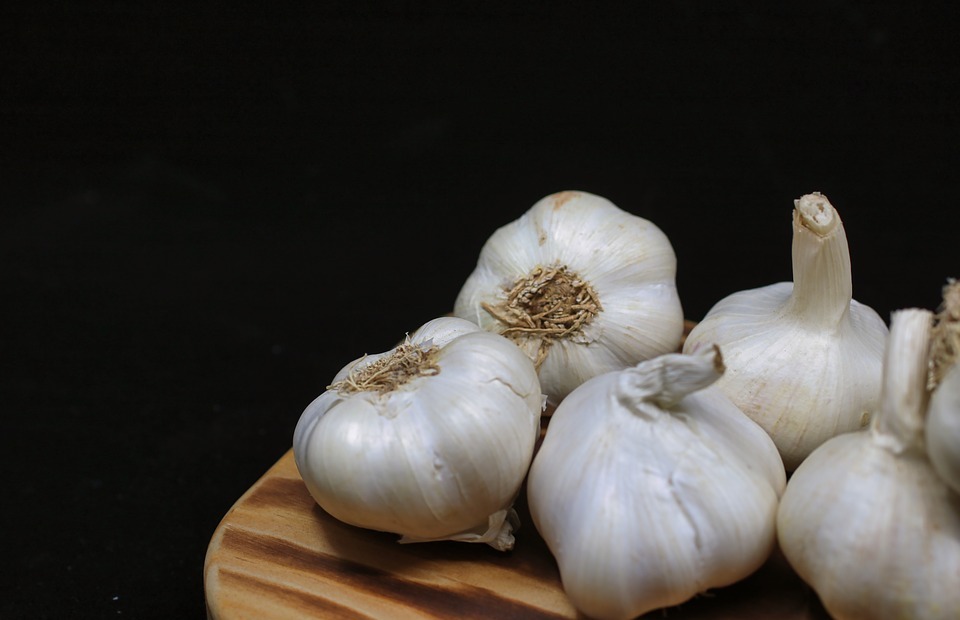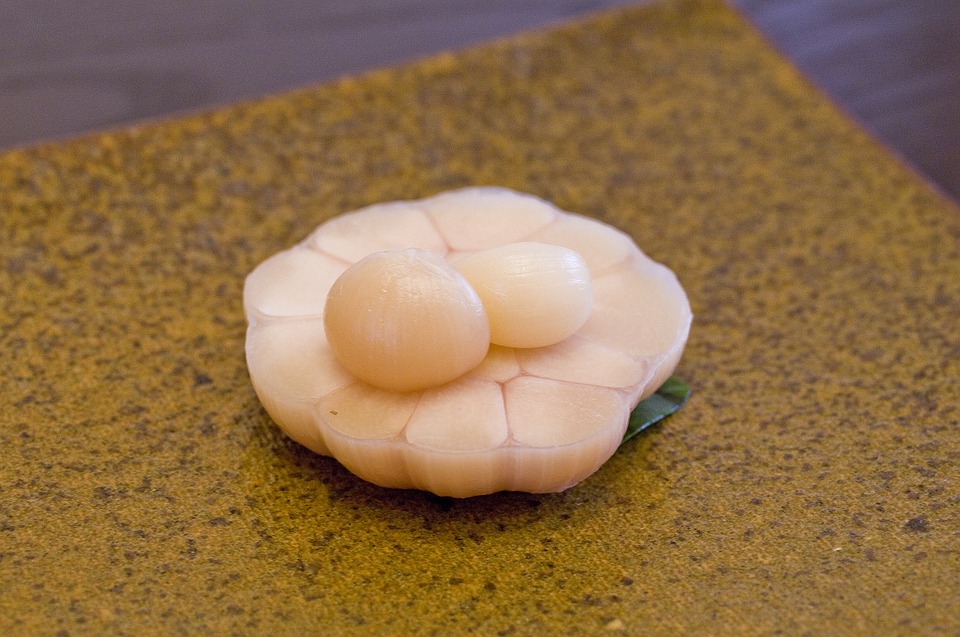Garlic, a staple ingredient in many culinary traditions, often finds its way into our kitchens. But for cat owners, the question of whether their feline companions can safely partake in this aromatic bulb frequently arises. This comprehensive article explores the multifaceted relationship between cats and garlic, delving into the potential benefits, risks, and essential considerations for maintaining feline health.
Part 1: Understanding the Complexities of Garlic and Cats

1.1. A Culinary Delight, But a Feline Foe
Garlic, renowned for its pungent flavour and distinctive aroma, is a culinary staple worldwide. It is widely appreciated for its potential health benefits for humans, including antimicrobial and antioxidant properties. However, this same ingredient poses a significant threat to cats, highlighting a critical disparity in how these species metabolize and process garlic.
1.2. Unveiling the Chemical Composition of Garlic
Garlic's characteristic flavour and odour stem from a complex array of compounds, with allicin being the key player. Allicin is known for its potent antimicrobial and antioxidant effects, contributing to garlic's purported health benefits for humans. However, for cats, this beneficial compound becomes a source of concern due to its potential to trigger a cascade of adverse reactions.
1.3. The Allium Genus: A Source of Feline Toxicity
Garlic belongs to the Allium genus, which encompasses onions, shallots, chives, and leeks, all of which pose a significant threat to feline health. These plants contain a potent compound called N-propyl disulfide, which is toxic to cats and can lead to a life-threatening condition known as Heinz body anemia.
Part 2: The Dangers of Garlic for Cats

2.1. Unmasking the Toxicity: The Impact on Red Blood Cells
N-propyl disulfide, the toxic compound present in garlic and other Alliums, wreaks havoc on red blood cells in cats. It interferes with their ability to carry oxygen throughout the body by causing the formation of Heinz bodies – abnormal structures within the red blood cells. These Heinz bodies impede the oxygen-carrying capacity of red blood cells, ultimately leading to anemia.
2.2. Heinz Body Anemia: A Life-Threatening Condition
Heinz body anemia is a serious condition in cats, characterized by a deficiency of healthy red blood cells, leading to oxygen deprivation throughout the body. Symptoms can range from mild lethargy to severe respiratory distress, depending on the severity of the anemia.
2.3. Identifying the Signs: Recognizing Symptoms of Garlic Toxicity
Early recognition of garlic toxicity is paramount in ensuring timely veterinary intervention. Common symptoms include:
- Lethargy and weakness
- Loss of appetite
- Vomiting and diarrhoea
- Pale gums
- Rapid breathing
- Increased heart rate
- Dark urine
- Seizures
2.4. The Cumulative Effects of Garlic Exposure
Chronic exposure to garlic, even in seemingly small amounts, can have a cumulative effect on feline health. The continued damage to red blood cells over time can lead to severe anemia, organ damage, and potentially even death.
Part 3: Garlic in Cat Food and Treats: A Potential Risk
3.1. Commercial Cat Food: A Source of Caution
While garlic is not a common ingredient in commercially available cat food, some brands may incorporate it in small quantities as a flavour enhancer. However, reputable cat food manufacturers are mindful of the risks associated with garlic and use it only in amounts deemed safe for feline consumption.
3.2. Homemade Cat Treats: A Recipe for Danger
Homemade cat treats are often made with ingredients that cat owners believe to be healthy and appealing. However, using garlic, onions, or other alliums in homemade cat treats can pose a significant risk to feline health. Even seemingly small amounts of these ingredients can be toxic.
3.3. Decoding the Label: The Importance of Reading Carefully
When selecting commercial cat food or treats, always read the label thoroughly to ensure it does not contain garlic, onions, or any other alliums. This diligent approach is crucial to safeguarding your cat's health and preventing accidental ingestion of toxic ingredients.
Part 4: First Aid and Treatment for Garlic Toxicity
4.1. Immediate Action: Seeking Veterinary Assistance
If you suspect your cat has ingested garlic, it is imperative to seek immediate veterinary attention. Time is of the essence in treating garlic toxicity, as early intervention can significantly improve the outcome.
4.2. Veterinary Treatment: A Multifaceted Approach
Veterinary treatment for garlic toxicity typically involves a combination of interventions:
- Inducing Vomiting: To remove any remaining garlic from the stomach.
- Supportive Care: Including fluid therapy to prevent dehydration and blood transfusions to address the effects of anemia.
- Monitoring: Close monitoring of the cat's vital signs and bloodwork is crucial to assess the severity of the toxicity and guide treatment decisions.
Part 5: Alternatives to Garlic for Cats: Safe and Delicious Options
5.1. Enhancing Cat Food Flavour: Safe and Appealing Options
For cat owners seeking to enhance the flavour of their cat's food without compromising their health, there are numerous safe alternatives to garlic:
- Chicken Broth: A natural and delicious way to add flavour and moisture to cat food.
- Salmon Oil: Rich in omega-3 fatty acids, providing nutritional benefits and a desirable flavour.
- Parsley and Dill: Herbs that add a delicate flavour and are generally safe for cats in small quantities.
- Turmeric: A potent anti-inflammatory spice that can be added to cat food in small amounts.
5.2. Homemade Cat Treats: Healthy and Delicious Recipes
There are many delicious and healthy homemade cat treat recipes that do not require the use of garlic or other toxic ingredients. Ingredients like chicken, fish, sweet potato, and pumpkin provide a variety of nutrients and textures that cats find appealing.
Part 6: The Bottom Line: Garlic is a No-Go for Cats
The scientific evidence is clear: garlic, in any form, is toxic to cats and should be avoided entirely. While the potential benefits of garlic for humans are well-documented, these benefits do not extend to our feline companions.
Part 7: Addressing Common Concerns: FAQs
7.1. Is garlic powder safe for cats?
No, garlic powder is just as toxic to cats as fresh garlic. The toxic compound, N-propyl disulfide, is present in both forms.
7.2. Can cats eat garlic in small amounts?
No, there is no safe amount of garlic for cats. The toxicity of garlic is cumulative, meaning that even small amounts over time can lead to health problems.
7.3. Is cooked garlic safe for cats?
No, cooking garlic does not eliminate its toxicity for cats. The toxic compound remains present even after cooking.
7.4. Is garlic a suitable natural flea repellent for cats?
No, garlic is not an effective or safe flea repellent for cats. Using garlic as a flea repellent can expose your cat to serious health risks.
7.5. What other foods are toxic to cats?
Besides garlic and onions, other foods that are toxic to cats include:
- Chocolate
- Grapes and raisins
- Macadamia nuts
- Alcohol
- Caffeine
- Xylitol (artificial sweetener)
7.6. What should I do if I suspect my cat has eaten garlic?
If you suspect your cat has eaten garlic, contact your veterinarian immediately. Prompt action can be crucial in mitigating the risks of garlic toxicity.
7.7. Can garlic cause allergies in cats?
While garlic is toxic to cats, it does not typically cause allergic reactions. However, individual cats may have sensitivities to garlic, so it is always best to err on the side of caution and avoid it completely.
By understanding the potential dangers of garlic for cats, cat owners can make informed decisions to protect their feline companions from this potentially harmful ingredient. It is essential to remember that garlic, in any form, should never be given to cats.
Everyone is watching

Are Cat Ribs Flexible? Understanding Their Anatomy
CATS & KITTENSThis article delves into the fascinating world of feline anatomy, exploring the flexibility of cat ribs and ho...

Can Cats Eat Bananas? (Everything You Need to Know)
CATS & KITTENSThis article dives into the intriguing question of whether cats can safely enjoy the sweet, yellow fruit, bana...

Cat Lifespan: How Long Do Cats Live?
CATS & KITTENSThis comprehensive guide explores the factors influencing the lifespan of our feline companions, providing ins...

Can Cats Get COVID-19? What You Need to Know
CATS & KITTENSThis article will delve into the fascinating world of feline COVID-19 susceptibility. We'll explore whether ca...

Can Cats Eat Eggs? A Complete Guide to Egg Safety for Your Feline Friend
CATS & KITTENSWhen it comes to treating our furry companions, we all want to ensure we're doing what's best for them. Eggs...
